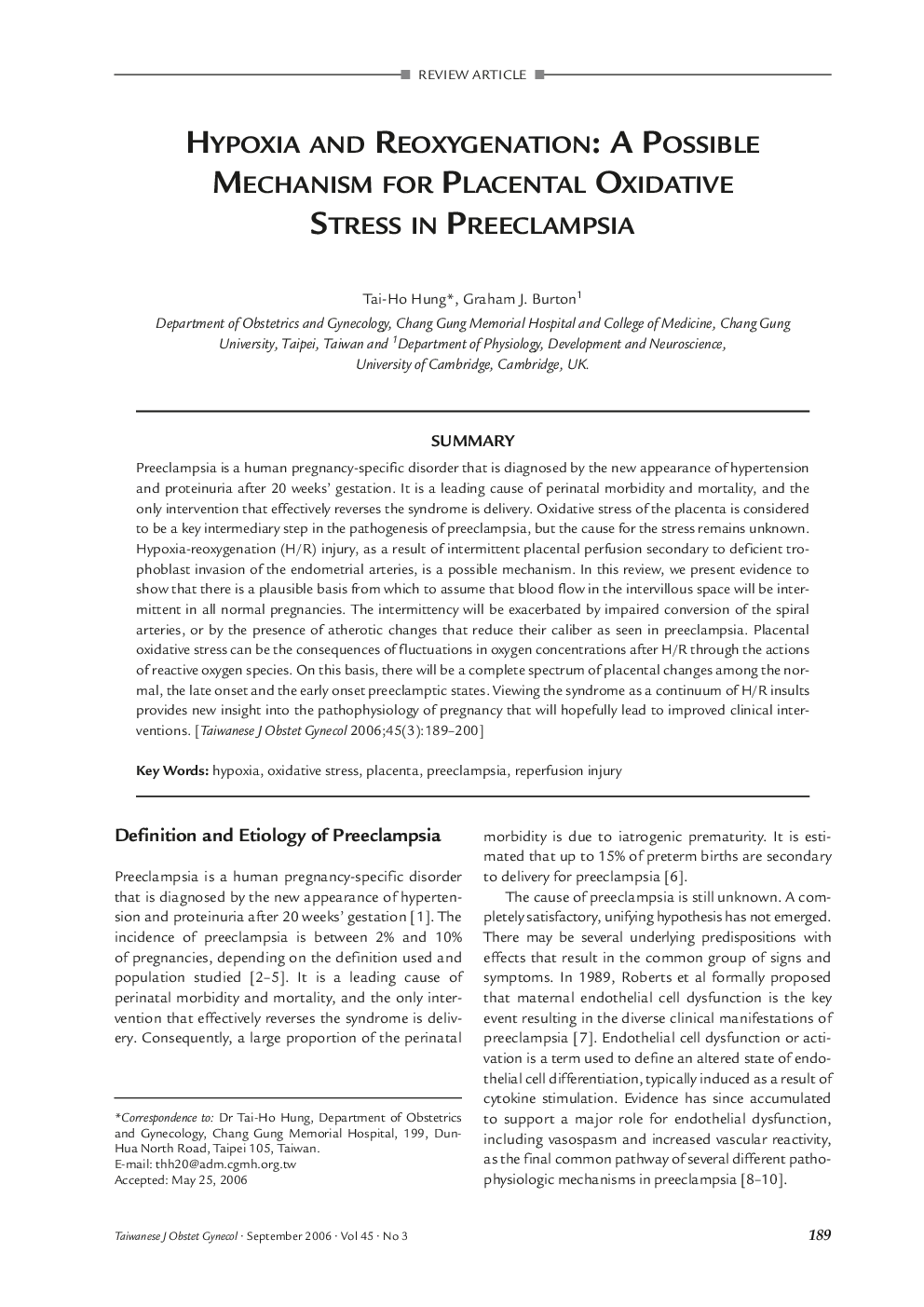| Article ID | Journal | Published Year | Pages | File Type |
|---|---|---|---|---|
| 3976233 | Taiwanese Journal of Obstetrics and Gynecology | 2006 | 12 Pages |
SummaryPreeclampsia is a human pregnancy-specific disorder that is diagnosed by the new appearance of hypertension and proteinuria after 20 weeks' gestation. It is a leading cause of perinatal morbidity and mortality, and the only intervention that effectively reverses the syndrome is delivery. Oxidative stress of the placenta is considered to be a key intermediary step in the pathogenesis of preeclampsia, but the cause for the stress remains unknown. Hypoxia-reoxygenation (H/R) injury, as a result of intermittent placental perfusion secondary to deficient trophoblast invasion of the endometrial arteries, is a possible mechanism. In this review, we present evidence to show that there is a plausible basis from which to assume that blood flow in the intervillous space will be intermittent in all normal pregnancies. The intermittency will be exacerbated by impaired conversion of the spiral arteries, or by the presence of atherotic changes that reduce their caliber as seen in preeclampsia. Placental oxidative stress can be the consequences of fluctuations in oxygen concentrations after H/R through the actions of reactive oxygen species. On this basis, there will be a complete spectrum of placental changes among the normal, the late onset and the early onset preeclamptic states. Viewing the syndrome as a continuum of H/R insults provides new insight into the pathophysiology of pregnancy that will hopefully lead to improved clinical interventions.
